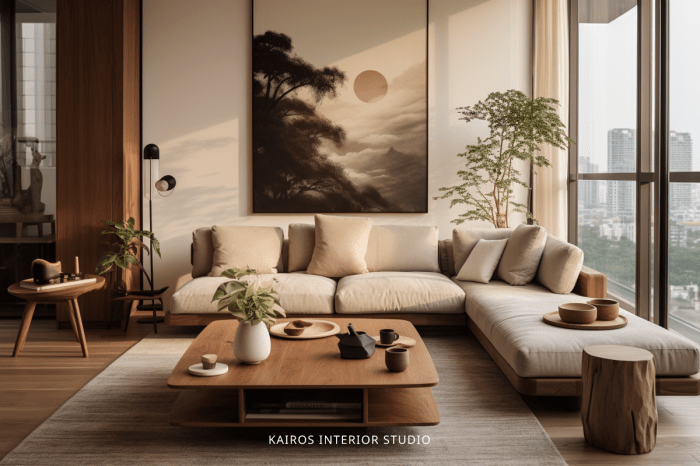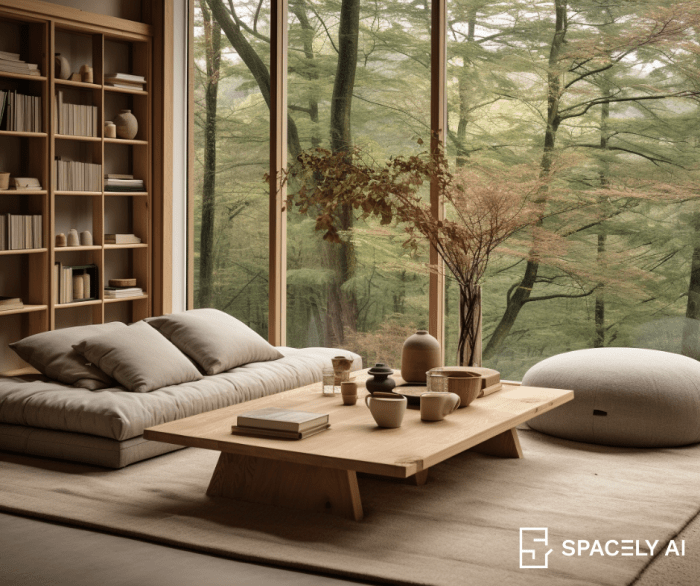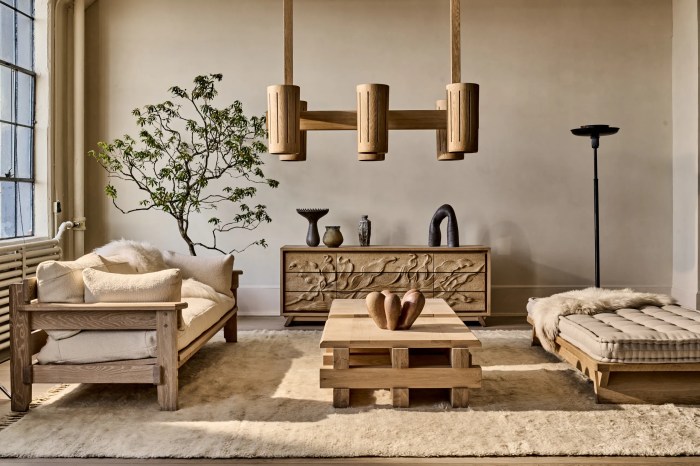Exploring the Essence of Japandi Design
Embark on a journey into the world of Japandi design, a harmonious blend of Japanese minimalism and Scandinavian functionality. This captivating style brings together the best of both worlds, creating spaces that are serene, simple, and sophisticated.
As we delve deeper, we will uncover the key elements, color palettes, materials, and textures that define Japandi design, offering insight into its origins and influences.
What is Japandi Design?

Japandi design is a fusion of Japanese minimalism and Scandinavian simplicity, creating a harmonious blend of two distinct styles. This design concept emphasizes clean lines, natural materials, and a sense of warmth and coziness.
Key Elements of Japandi Design
- Minimalist Aesthetic: Japandi design focuses on simplicity and functionality, with a clutter-free and organized space.
- Natural Materials: Wood, bamboo, stone, and other natural elements are commonly used to bring a sense of nature indoors.
- Neutral Color Palette: Japandi design incorporates a calming color scheme of whites, grays, and earth tones to create a serene atmosphere.
- Functional Furniture: Furniture pieces in Japandi design are sleek, functional, and often multi-purpose to maximize space.
- Wabi-Sabi Influence: The Japanese concept of wabi-sabi, which embraces imperfection and impermanence, is reflected in Japandi design through handmade and imperfect elements.
Origins and Influences of Japandi Design
Japandi design originated from the growing popularity of Scandinavian design in Japan and the mutual admiration between the two cultures for their design philosophies. The clean lines and functional approach of Scandinavian design complement the minimalist aesthetics and craftsmanship of Japanese design, leading to the emergence of Japandi design as a harmonious fusion of the two styles.
Characteristics of Japandi Design

Japandi design is a fusion of Japanese minimalism and Scandinavian coziness, resulting in a unique aesthetic that combines simplicity, natural elements, and functionality.
Natural Materials
Japandi design incorporates natural materials such as wood, bamboo, and stone to bring warmth and a sense of nature into the space. These materials are often left in their natural state or with minimal treatment to emphasize their organic beauty.
Neutral Color Palette
The color palette in Japandi design is typically neutral, consisting of whites, grays, blacks, and earth tones. This minimalist approach to color helps create a serene and harmonious environment that is both calming and inviting.
Clean Lines and Simple Silhouettes
Japandi design features clean lines and simple silhouettes in furniture and decor. This minimalist approach enhances the sense of space and allows the natural materials to shine, creating a clutter-free and peaceful atmosphere.
Functional Design Elements
Functionality is key in Japandi design, with furniture and decor serving both a practical purpose and an aesthetic one. Multi-functional pieces and clever storage solutions are often used to maximize space and efficiency in a Japandi-inspired interior.
Balance of Form and Texture
Japandi design strikes a balance between different textures and forms to create visual interest and depth in the space. Combining smooth surfaces with tactile elements like cozy textiles or rough textures adds richness and warmth to the overall design.
Color Palette in Japandi Design
In Japandi design, the color palette typically consists of a harmonious blend of neutral colors with pops of muted or earthy tones. These colors are chosen carefully to create a sense of balance, simplicity, and tranquility in the space
Neutral colors play a significant role in Japandi design as they help to create a serene and minimalist environment. They provide a clean and uncluttered look while allowing other elements in the room to stand out. The use of neutral colors also helps to evoke a sense of natural beauty and calmness, which are key principles of both Japanese and Scandinavian design.
Utilization of Different Shades in Japandi Interiors
- White: White is often used as the base color in Japandi interiors to create a bright and airy feel. It helps to reflect light and make the space appear larger.
- Wood Tones: Various shades of wood, such as light oak or dark walnut, are incorporated to add warmth and texture to the design. Wood elements bring a sense of nature indoors, enhancing the connection to the environment.
- Grey: Grey is a popular choice for accentuating the neutral palette in Japandi design. It adds a sophisticated touch and can be used in furniture, textiles, or accessories.
- Earthy Tones: Soft greens, muted blues, and warm browns are often used as accent colors to bring a sense of nature and tranquility to the space. These earthy tones complement the neutral backdrop and add depth to the design.
Materials and Textures in Japandi Design
Japandi design is known for its harmonious blend of Japanese minimalism and Scandinavian functionality, creating a serene and timeless aesthetic. The choice of materials and textures plays a crucial role in achieving this balanced look.
Common Materials in Japandi Design
In Japandi interiors, you will often find a mix of natural materials such as wood, bamboo, and rattan, which reflect the Japanese influence, and sleek metals, concrete, and ceramics that represent the Scandinavian style. These materials bring warmth, texture, and a sense of nature into the space.
Balance Between Natural Elements and Modern Finishes
The key to achieving the Japandi look lies in finding the right balance between natural elements and modern finishes. While wooden furniture and accents add a warm and organic feel to the space, incorporating modern finishes like matte black or brushed metal fixtures creates a sense of sophistication and elegance.
Enhancing the Japandi Aesthetic with Tactile Textures
Tactile textures play a significant role in enhancing the Japandi aesthetic by adding depth and visual interest to the space. Textiles like linen, wool, and cotton are commonly used to create cozy layers, while rough textures like raw wood or stone add a touch of rustic charm.
Combining these textures with smooth surfaces like polished concrete or glass creates a harmonious contrast that elevates the overall design.
Closure

In conclusion, Japandi design offers a timeless elegance that resonates with those seeking a tranquil yet stylish living environment. By embracing the principles of minimalism, functionality, and natural elements, Japandi design continues to inspire and captivate interior design enthusiasts worldwide.
Questions Often Asked
What defines Japandi Design?
Japandi design combines the minimalist ethos of Japanese design with the functional approach of Scandinavian design, resulting in a harmonious aesthetic that values simplicity and practicality.
How does Japandi design incorporate minimalism and functionality?
Japandi design focuses on clean lines, uncluttered spaces, and the use of natural materials to achieve a minimalist look, while also emphasizing functionality by ensuring that every piece serves a purpose.
What is the significance of neutral colors in Japandi design?
Neutral colors like beige, grey, and white are essential in Japandi design as they create a calming and cohesive atmosphere, allowing the focus to remain on the simplicity and beauty of the space.
How do materials and textures enhance the Japandi aesthetic?
Japandi design often combines natural elements such as wood and bamboo with modern finishes like metal and glass to create a balanced and visually appealing contrast. Tactile textures like soft fabrics and rough stone add depth and warmth to the design.